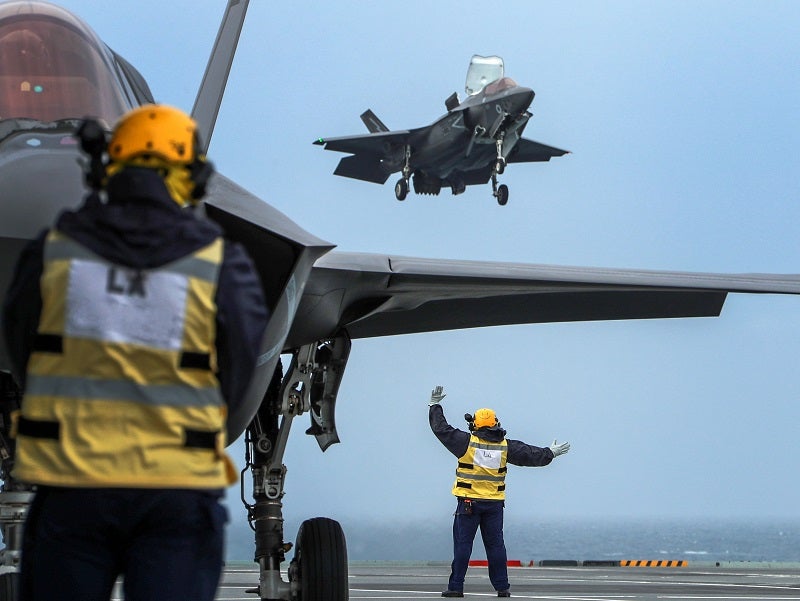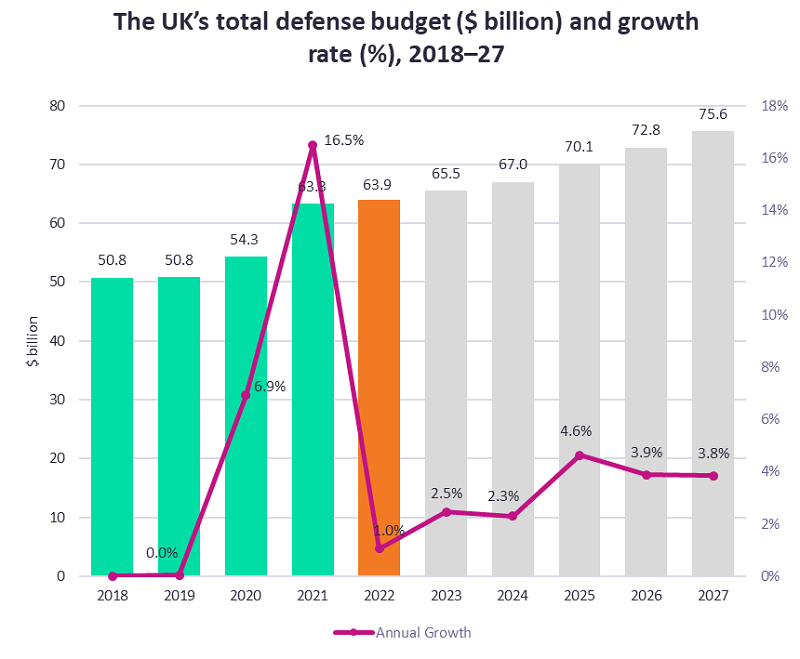
The UK Royal Air Force’s (RAF’s) struggles with pilot training continue to pose a problem for the service, with the fifth-generation F-35 Lightning II stealth fighter fleet currently balanced on a near-one-to-one knife-edge ratio of platforms to qualified pilots.
Currently, the UK has 27 of the short take-off vertical landing (STOVL) F-35B aircraft and a combined total of 33 pilots able to operate the platform, including three on exchange from the US Air Force, US Marine Corps (USMC) and Australian Royal Air Force.
Providing evidence to the UK Defence Committee on 2 November, Defence Secretary Ben Wallace said that this was “still not a staggering amount” of pilots, coming 24 hours after he had erroneously stated in a House of Lords evidence session on 1 November that the UK had fewer pilots qualified on the F-35 than it had aircraft.
Of delays to UK pilot training, Wallace told the Defence Committee that “we have gone backwards from when I gave my instruction to the Chief of the Air Staff [Air Chief Marshal Mike Wigston]”.
Issues with fast jet training have been widely documented in recent months, with UK trainee pilots waiting years in a pipeline plagued by reliability issues with the Hawk trainer jets, among other issues.
On 11 October, James Heappey, Minister of State at the MoD and Minister for the Armed Forces, stated in a written parliamentary response that measures to offset delays in UK military pilot training included sending trainees to NATO Joint Jet Pilot Training in the US, as well as accelerating planning for No 11 Squadron (the joint Qatar/UK Typhoon unit) to train pilots from late 2022 until 2027.
How well do you really know your competitors?
Access the most comprehensive Company Profiles on the market, powered by GlobalData. Save hours of research. Gain competitive edge.

Thank you!
Your download email will arrive shortly
Not ready to buy yet? Download a free sample
We are confident about the unique quality of our Company Profiles. However, we want you to make the most beneficial decision for your business, so we offer a free sample that you can download by submitting the below form
By GlobalDataEven without the delays, it takes several years to train pilots on the UK’s main frontline fast jets of the F-35B and Eurofighter Typhoon. According to official UK Government figures the average wait time for RAF trainee pilots from completing the Military Flying Training System to starting their Operational Conversion Units for Typhoon and F-35 is approximately 11 and 12 months respectively.
On 25 October it was revealed that the average time between beginning the Lightning II operational conversion course and achieving combat ready status is 20 months. There was also on average a gap of 68 weeks between completing Basic Flying Training and beginning Advanced Fast Jet Training for RAF pilots.
A changing US relationship
The UK is committed to buying 138 F-35 fighters over the lifetime of the programme, a number reiterated on 17 October in a Hansard written parliamentary response. The intention is to increase the size of the UK F-35B fleet up to 48 aircraft by 2025 and reach 74 “towards the end of the decade”, Wallace stated.
Ambitions for the UK to field 74 F-35 fighters by the end of the decade could help secure a changing relationship with the US, according to Madeline Wild, aerospace, defence, and security analyst at GlobalData.
“The announcement comes at a time of great change in the global security environment, as the UK is still seeking to reaffirm its position in the defence industry in a post-Brexit world. The financial importance of the F-35 and other programmes should not be understated with allies such as the US placing great value on the economic commitment to defense demonstrated by the UK,” Wild states.
| Equipment | Category |
| Programme name | F-35B |
| Type | Combat aircraft |
| Supplier country | US |
| Estimated contract allocation (2022-32) | $11.7bn |
| Contract period | 2012-2032 |
| Contracted units (2022-2032) | 56 |
The new US National Security Strategy (NSS), published in October, makes no mention of distinctive bilateral ties with the UK, instead only referring to the United Kingdom in the context of multinational security structures such as AUKUS or Five Eyes, or as a member of geopolitical groupings such as the G7.
Instead, the White House has sought to promote ties with the European Union (EU), making mention of the EU and European Commission no less than 16 times in the NSS, including a reference to the “raising of the ambition of the US-EU relationship”. The nearly unheard-of intervention into domestic UK politics by US President Joe Biden recently provided further indication that Washington places less value on its ties with London.
However, joint procurement efforts such as the F-35, Wild said, could help to secure ties to the US by providing a revenue stream to US defence primes, while UK industry would also benefit due to its 15% workshare in the programme. GlobalData forecasts that the UK will spend $11.7bn on the procurement of F-35Bs during 2022 to 2032.
“The UK’s commitment to the programme has been demonstrated by the announcement of future F-35 fleet numbers. This number will provide the UK with more stealth-strike, ISR, and EW capabilities. These benefits will not be reaped, however, if the RAF does not reform the training and recruitment pipelines for its pilots,” Wild says.
“UK fast-jet pilots typically take 4.8 years to reach the operational conversion unit of their specified aircraft. This does not include the time taken to recruit or conduct basic officer training, meaning that the UK will still struggle to fill the new pilot requirement by the end of the decade.”
Financial meltdown
Although not a cure to the UK’s training woes, the planned intention to increase defence spending up to 3% of GDP, up from around 2.2% currently, could have offered additional resources to further outsource UK pilot training. Like the UK, the US Marine Corp operate the F-35B STOVL variant, potentially providing a near- and medium-term solution to ongoing fast jet training issues.

However, the UK’s financial meltdown, caused by a variety of factors from inept governance, the war in Ukraine, currency weaknesses, and a looming recession likely longer in duration than the Great Depression, have dampened most aspirations to increase spending. With defence funding approved up to 2024, the likely date for the next election, spending increases in the second half of the decade could be delayed or even shelved, as the UK Ministry of Defence (MoD) seeks to simply retain current funding plans.
With the collapse of the Truss administration after a chaotic six weeks in power, the premiership of Prime Minister Rishi Sunak, aided by Chancellor Jeremy Hunt, looks set to call for efficiency savings across all government departments. With the autumn budget statement due to be announced on 17 November, all eyes will be on the Treasury to see what impact the financial crisis will have on spending.
The UK is undertaking a review of the 2021 Integrated Review policy paper in light of the changing global circumstances caused by Russia’s invasion of Ukraine, with the MoD due to publish its review of the accompanying Defence Command Paper early next year.







